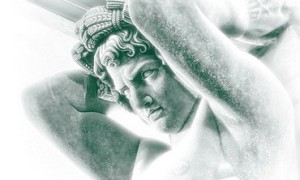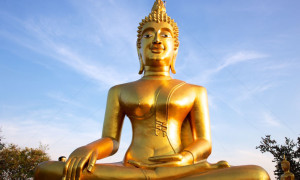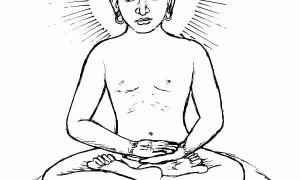Breathing out long, he knows, “I’am breathing out long;”
Breathing in long, he knows, “I’ am breathing in long.”
Buddha, Anapanasati Sutta
Explanation of Anapanasati Stage One by Buddhadasa Bhikkhu
This Stage deals primarily with the long in- and out- breathing. What needs to be understood is the word “breathing” itself. In order to understand long breathing the meditator should practice breathing in and out as long as he can and observing, so that he gets to know just what the longest breath is like.
In the long breathing practice, each breath, that is, each incoming breath and each outgoing breath, may take as long as thirty to forty seconds. This practice will be successful only if the meditator breathes completely relaxed and sits perfectly up-right. In making the longest possible in-breath he will note that the abdomen contracts to the maximum and the chest expands to the maximum; conversely, on making the longest possible out-breath the abdomen expands to the maximum and the chest contracts to the maximum. Such breathing can really be called the longest in the sense of both distance and time.
To see this properly the meditator should examine also the short breathing for the sake of comparison. Short breathing has the opposite manifestations. On the in-breath the abdomen expands; on the out-breath it contracts. It can be seen that the reason for this is that so little breath is taken in that the upper portion of the chest expands and contracts hardly at all. So the manifestations at the abdomen are just the opposite of those associated with long breathing. The meditator must know just how to observe, otherwise he will misunderstand and become completely confused. As a guiding principle, an in-breath is “short” if it causes the chest to expand only a little while not causing the abdomen to contract at all; if a breath does cause the abdomen to contract, it is to be considered “long”. Conversely, to “breathe out short” is to breathe out only so much as to make the chest contract slightly and not so much as to make the abdomen expand; if the abdomen does expand the breath is to be considered “long.” The criterion is the degree of contraction of the chest. The movements at the abdomen will always be the opposite of those at the chest—at least in the case of long breathing.
Another point to be observed is whether the breath is heavy or light, coarse or fine. If the air “strikes the nostrils violently,” the breathing is described as heavy or coarse; if it does not “strike the nostrils violently,” so that the contact is not felt, the breathing is spoken of as light or fine. These two characteristics of breathing should be understood as well, because they are relevant to the following steps.
Whether the breathing is short or long depends on the state of the mind and the condition of the body, in fact, no sooner does one start taking an interest in the breathing than the breathing becomes longer or shorter than usual. So in the first
step the meditator must observe how the length of the breath changes according to circumstances. For example, if the state of mind is normal the breathing is long; and if the state of mind is bad, as when there is anger, the breathing is short and
abrupt. Again, when the body is at ease the breathing is longer than when it is in some abnormal condition owing to fatigue or the like. In whatever condition the breathing happens to be, as soon as the meditator concentrates on it, it is naturally
bound to become longer.
In the beginning, the meditator should breathe as roughly and as slowly as possible in order to observe what the breathing itself is like: how it strikes the nostril as it enters; where it appears to terminate; where and for how long it stops before reversing direction. If he breathes lightly and finely from the very beginning he will be unable to observe these things and will find it difficult to concentrate on the breath, perhaps so difficult that he fails completely in the attempt. In addition, it is advisable for the meditator to breathe so roughly and heavily that a sound is produced which is audible to himself. The ears are helpful in concentrating on breathing.
Actually to “establish mindfulness on the breathing” is to concentrate not on the air itself but on the surface of the skin where the air strikes. Air, being so fine and intangible, is very difficult to observe; but when it happens to strike the surface of the skin at a sensitive spot, it is easy to detect its presence and to observe the duration of the contact. And when there is an audible sound as well it is all the more easy to observe how long or short the breaths are. This is the advantage of breathing heavily in the beginning. Even in the later stages of the practice the meditator will find it advantageous to breathe deeply
and heavily until he has become used to it and it has become a habit. This will always be beneficial to the training in succeeding stages, quite apart from being very good for bodily health. It is advisable then to train oneself to breathe deeply and heavily in a natural way at every opportunity.



